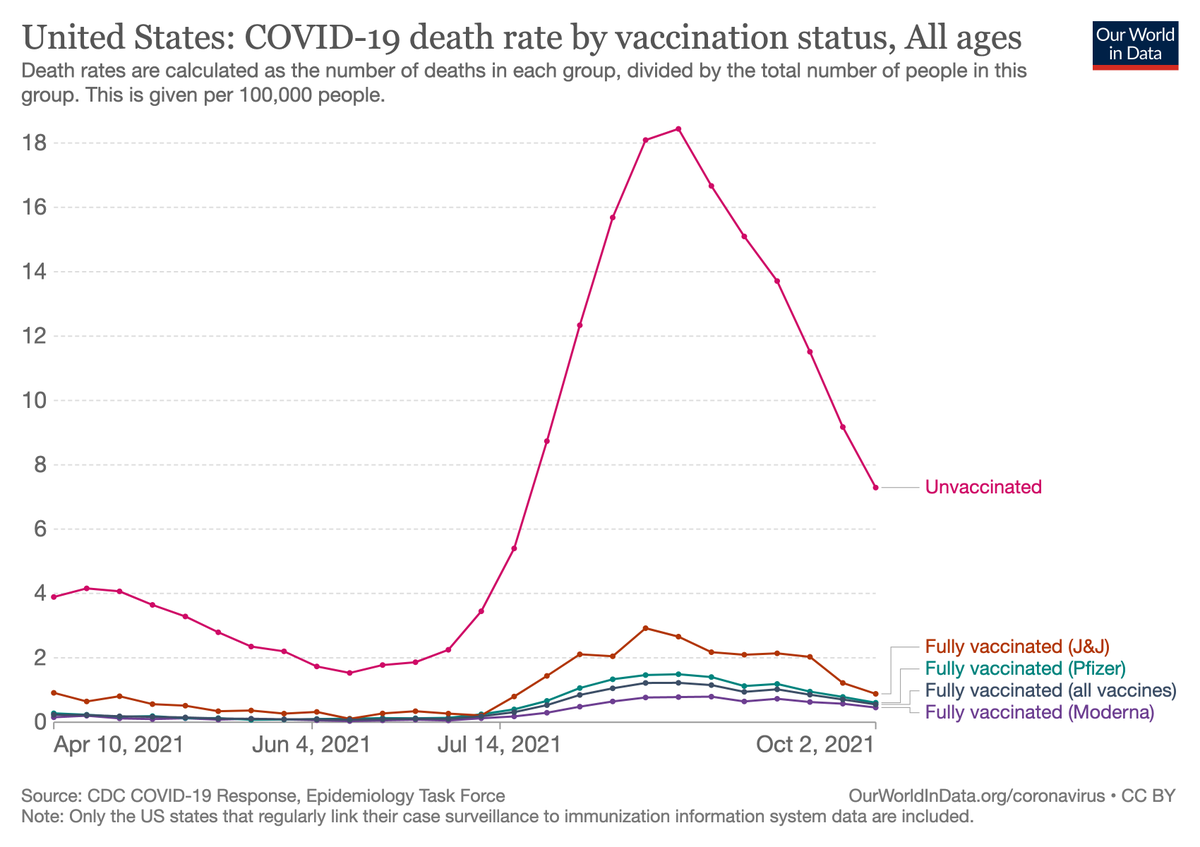
Media reporting on COVID vaccination should focus much less on fully-vaccinated people, especially when comparing countries.
It's a metric that has many more flaws than the rest of the vaccination figures, and we now know that it doesn't have as much epidemiological relevance.
It's a metric that has many more flaws than the rest of the vaccination figures, and we now know that it doesn't have as much epidemiological relevance.
Flaw 1: the original definition of the protocols was sometimes very arbitrary. J&J doses give you a full vaccination, but only because that's what the company tested. But since J&J seems to give lower protection, many countries recommend people get a 2nd dose of another vaccine.
Flaw 2: definitions vary from country to country. A few countries in Central Europe consider that people with a previous infection + only 1 dose are fully vaccinated. It isn't necessarily a bad thing, but it makes it very hard to compare full vaccinations accurately.
Flaw 3: if what you're interested in is vaccination uptake / willingness to get vaccinated, then "people fully vaccinated" is basically lagging behind "people with at least 1 dose" by several weeks. That makes it a much worse metric, and you can simply look at 1st doses instead.
Flaw 4: "full vaccinations" don't tell us anything about booster doses, which we now know to be a very important factor in renewed epidemic waves and waning immunity. As reported by @jburnmurdoch & @mroliverbarnes, "3 doses" is the new "2 doses". ft.com/content/974487… 

For all these reasons, reporters (& governments) should focus less on fully-vaccinated people, and instead look at these more relevant metrics:
• For uptake: people with at least 1 dose
• For cumulative protection: total doses per 100
• For recent protection: boosters per 100
• For uptake: people with at least 1 dose
• For cumulative protection: total doses per 100
• For recent protection: boosters per 100
• • •
Missing some Tweet in this thread? You can try to
force a refresh












